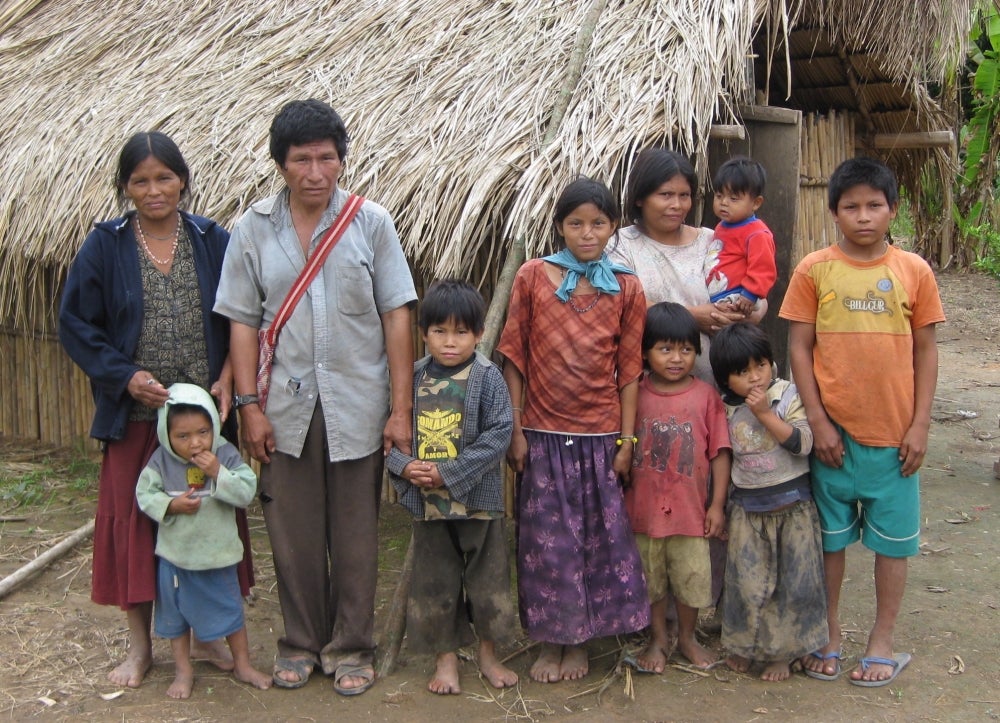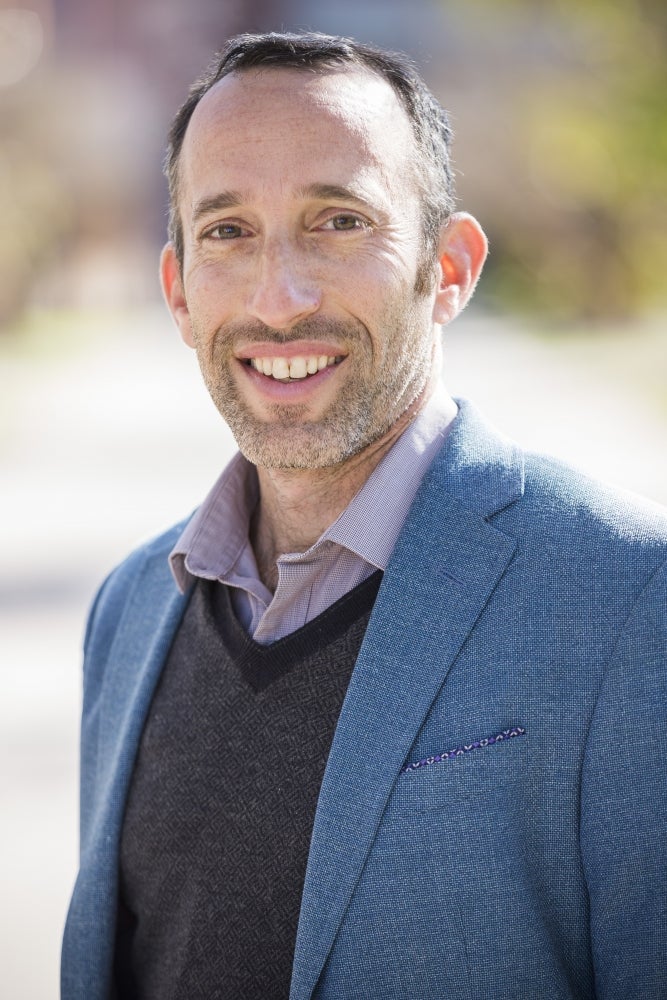
WEIRD Science

For decades, consensus among psychologists has held that a group of five personality traits — or a slight variation thereof — universally define the structure of human personality.
Previous research conducted in more developed countries and across many cultures found strong support for what experts refer to as the “Big Five” — openness, conscientiousness, agreeableness, extraversion and neuroticism.
However, when UC Santa Barbara anthropologist Michael Gurven and his team studied the Tsimane, an isolated indigenous population in the Bolivian Amazon, they found not five broad dimensions of personality, but two — prosociality and industriousness.
Perhaps the Big Five aren’t so universal after all.
Much of Gurven and colleagues’ long-term research in Bolivia — spanning nearly two decades — offers other surprising and revealing examples that amplify the questions of what is universal and why. Perhaps what’s true for one culture cannot be extrapolated or mapped onto another.
And that’s exactly his point in a new paper published in the Proceedings of the National Academy of Sciences.
A Sample Diversity Problem
Sample diversity and socioecological theory, Gurven argues, are essential to improving the integrity and explanatory power of the social sciences. Among the social sciences, he adds, psychology especially suffers from a sample diversity problem.
According to Gurven, a professor of anthropology and co-director of the Tsimane Health and Life History Project, even after repeated calls to diversify samples, over 90 percent of participants in studies published in the top developmental psychology journals still hail from North America and Europe, or as has been playfully (but aptly) termed, Western, educated, industrialized, rich democracies (WEIRD). This pattern is not unique to developmental psychology, but is common to most subfields of psychology.
“And yet that’s only 18 percent of the world population today — and certainly unrepresentative of how we’ve lived over most of our species’ existence,” Gurven said.
“Many areas of psychology if not directly, then implicitly, generalize study findings as human universals” he continued, “but if American students living in cities comprise our main study population, how can we generalize based on a tiny subset of humanity?”
Accounting for Cultural Differences
Often those study populations are chosen out of convenience, but that choice can have a huge impact on the science they seek to inform, Gurven claims. “It’s easier and it’s often less expensive to study those in your large undergrad classes,” he said. “And people might argue that if they’re studying, say, perception, then maybe it doesn’t matter whether they do it here or someplace else. But it really does. There’s a growing set of examples of how certain stylized ‘truths’ are believed to be universal, but when you look in different places, you often find that’s not the case. And it’s not trivial.”
Gurven’s paper came out of a recent Sackler Colloquium of the National Academy of Sciences on “pressing questions in the study of psychological and behavioral diversity.”
“One focus of the meeting was on how to diversify both who we study and who does the studying in order to improve the science. Another was on how to take culture more seriously — and to what extent we need to,” Gurven explained. “Cultural differences across populations or within populations over time are usually ignored or considered somehow irrelevant.”
Socioecological Theory
For Gurven, it comes down to embracing the same socioecological theory (also referred to as behavioral ecology) that has helped weave together the life and social sciences. Rooted in evolutionary and ecological principles, it often is ignored in much of the psychological sciences. “Using that theory explicitly forces people to pay attention to how features of the physical and social environment might affect a whole litany of behaviors and psychological traits,” he said.
“The broad range of environments our species has experienced over its long history," he continued, "leads us to expect that many traits should vary as flexible responses to environmental conditions in ways that can lead to systematic differences across locales and situations and over time.”
Attention to socioecological theory requires researchers to look beyond convenience samples both within the U.S. and abroad, Gurven noted, and will result in improved psychological science.
Socioecological theory can be used to help researchers understand psychological variation, and also address issues related to the ability — or not — to replicate a study and achieve similar findings. “Not paying direct attention to the context — to culture, to the nuance — is actually hurting our science,” Gurven said. “One reason psychology is experiencing a ‘replication crisis’ right now is because context, culture, environment and other exposures shape how people think, feel and act — and so some of the failure to replicate studies might be due to expecting humans everywhere to react the same way in an experiment.
“A number of us in the meeting coming from anthropology have long had an eye toward broadening the social sciences. Recognizing and trying to explain human variation is the bread and butter of anthropology,” he went on. “Whereas psychologists and other social scientists do not usually incorporate that perspective directly in their studies — instead treating all humans the same, or ignoring their background altogether.”
Looking Beyond the WEIRD
But if we want to understand the human condition, Gurven argues, it’s necessary to consider people living under a wide range of experiences, cultures and environments. If many generations of industrialization, schooling, world religions, and public health infrastructure are part of what make many of us WEIRD, we need to better understand how these exposures affect our psychology and behavior.
Though he is quick to point out such research does not necessarily require world travel. “There’s plenty of diversity within the United States that’s untapped, most of it outside the ivory tower of the academy,” he said.
Case in Point: The Big Five
In his paper, Gurven lays out a theoretical framework for considering how and why these different aspects of so-called “modernization” might be important in shaping the development of key psychological traits. He focuses on two examples from his research with the Tsimane. The first involves the Big Five. “Part of why this became fascinating to study was because it doesn’t take long to realize there really is no theory in psychology that generates the Big Five, that says personality structure has to look like this,” he said. “It’s instead an inductive exercise that takes self- or peer ratings of personality and runs fancy statistical analyses on them to unveil some overarching structure consisting of five principal factors.”
“We looked at the degree of correlation across all five factors,” Gurven explained. “The correlation should be close to zero if the Big Five are truly independent. But when you compare the U.S., Canada, Indonesia, all the places this has been done, it turns out there’s a lot of variability in how correlated they are.”
The extent of correlation, he added, relates to the number and diversity of social, economic and political niches, or what he refers to as ‘complexity’ of the environment. “And we had different ways of measuring that — degrees of urbanization, economic development, the number of diverse products a country produces. And, basically, the more complexity of this type in a country, the more ways there are of ‘being’ — and the lower the correlation across the Big Five.”
In other words, the Big Five is most clearly represented in the most developed, urban countries, i.e. the WEIRD samples mentioned above.
Another Case in Point: Health Locus of Control
The second example Gurven uses in his paper involves health locus of control — if you believe your future prospects are largely out of your hands or are otherwise uncertain, you are more likely to focus on the present and discount the future. That in turn informs many of your actions. “Your experiences and exposures throughout development in a particular environment shape what’s called your time preference — the extent to which you value things now versus in the future,” he said.
“It sounds simple, but it has big implications,” Gurven continued. “For example, if you think your days are quickly numbered, you’re not as likely to make your annual checkup a priority. Your choice not to seek routine medical care or prioritize a healthy lifestyle may be a rational response to living in a dangerous, unpredictable environment.”
Understanding Variability
Taking that perspective seriously means that many traits that psychologists and education specialists care about — perception, impulsivity, attention span, self-efficacy, temporal discounting — are not simply pathological responses due to lack of knowledge or poor upbringing, but may represent adaptive responses to the surrounding environment in which people find themselves.
Gurven cited a classic study which showed how over 100-fold level differences in homicide rates across neighborhoods in Chicago affect risk-taking, criminal behavior and the timing of childbearing. “How is such high-level variation not shaping the psychology of the people who live there?” he asked. “And yet most psychologists do not set up studies in these types of settings.”
Again, noted, that kind of theoretical perspective forces researchers to think about who they should be sampling, and what should routinely be reported about study participants. “Sampling students who are well off and comfortable may reveal only a narrow range of behavior,” Gurven said. “If I sample students with varied backgrounds but I don’t know or care about the history of my participants, I’m missing out on vital opportunities to see how that variability maps onto differences in behavior or psychology.”
The implications for what social scientists choose to study are enormous. “We should study places and people that have been largely ignored — in more marginalized regions that may be hard hit, not just the ones that are convenient and familiar.” In other words, we need to look beyond our backyards — to rural areas, other countries and other cultures.
“We cannot afford to rely only on disciplines like anthropology or cultural psychology for increasing the diversity of samples,” said Gurven. “Scientific progress itself requires improving representation and testing ideas across a large swath of human experience. Hopefully such practices will one day be mainstream across the social sciences.”



